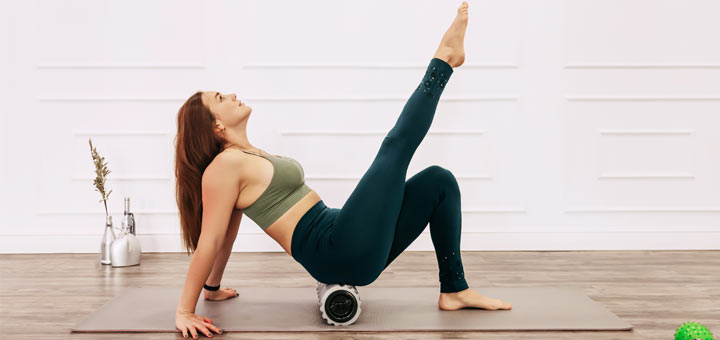Do enjoy foam rolling and massage therapy? If you do, then you are most likely familiar with fascia, or you’ve heard the term tossed around. If you don’t stretch or engage with foam rolling, you can’t expect the body to move with ease. In fact, tight fascia contributes to sore muscles and an inability to elongate them during stretching. That’s why fascia stretching is one of the newest forms of focused stretching.
What Is Fascia?
Fascia is the sheath of connective tissues that separates, protects, and encases bones, organs, cardiovascular vessels, and neurological structures in the body. Because it surrounds many of the body’s important structures, it stretches as you move. One of fascia’s primary functions is to reduce friction between muscles and organs. When it becomes irritated, though, you can experience immense stiffness, tightness, and pain that restricts mobility. This can happen as a result of low hyaluronan, a substance that exists between facia layers and supports movements. Decreased levels of hyaluronan can result from overuse of a certain body part, recovering from an injury, or lack of physical activity.
What Is Fascia Stretching?
Fascia stretching, or fascial stretch therapy (FST), is a form of stretching that helps reduce tension in the fascia. While you can engage with certain movements on your own, there are many facilities that offer the assisted form of this type of stretching. For example, a stretch therapist will target the fascia and joint capsule to achieve strength, flexibility, pain relief, and movement. Therapists perform FST on a massage table, more often than not, and tend to provide results instantaneously.
Even though it can feel amazing to have another person stretch you, FST can be a little expensive for regular visits. Fortunately, you can easily keep the fascia limber and flexible, which ultimately enhances your overall mobility. Engage in the following fascia stretching exercises, which work to target your major muscles and accompanying fascia. You can do these moves in order or separately, depending on what you need to target. They are simply tools that help fine tune your body so it can function without pain.
Kneeling Plantar Fascia Stretch
The plantar fascia is the band of tissue that runs from the heel to the ball of the foot, providing arch support and shock absorption. If the plantar fascia is irritated, you increase your risk of developing plantar fasciitis. Stretching the plantar fascia can help prevent or manage pain. Start on your hands and knees with your toes flexed behind you. Walk your hands closer to your body as you sit your hips farther back until you eventually sit back on your heels. Feel the stretch along the soles of your feet and hold this position for 20-30 seconds. Return to the starting position.
Upper Trunk Rotation Stretch
Some of you may be more familiar with the other name of this stretch: thread the needle. It works to lengthen the rotators of the upper part of the torso, but it also helps to stretch the thoracolumbar fascia. This is a diamond-shaped area of connective tissue that covers muscle in the thoracic and lumbar regions of the back. Bring yourself into a tabletop position, keeping your palms on the ground directly under your shoulders and your knees directly under your hips. Lift the right arm up to the ceiling, and then gently twist your torso as you thread your right arm under your body, coming to rest on your right shoulder. You can also rest your right temple on the mat, directing your gaze at your right hand, and make sure to keep your left arm extended beyond your head. Hold this pose for 20-30 seconds and then repeat on the other side.
Lower Trunk Rotation
For people with a tight lower back or general lower back pain, this is the best stretch to do. It works to elongate the rotators of the lower part of the torso, in addition to the thoracolumbar fascia. Start by lying flat on your back with both legs extended in front of you. Extend your left arm out to the side and keep it relaxed. Bend your left leg and rotate it to the right side of the body. Using your right hand, gently grab the top of the left knee and pull it down towards the floor. Keeping your shoulders flat on the ground is more important than the left knee touching the ground. Hold this stretch for 20-30 seconds and then repeat on the other side.

Vincent Stevens is the senior content writer at Dherbs. As a fitness and health and wellness enthusiast, he enjoys covering a variety of topics, including the latest health, fitness, beauty, and lifestyle trends. His goal is to inform people of different ways they can improve their overall health, which aligns with Dherbs’ core values. He received his bachelor’s degree in creative writing from the University of Redlands, graduating summa cum laude. He lives in Los Angeles, CA.






















